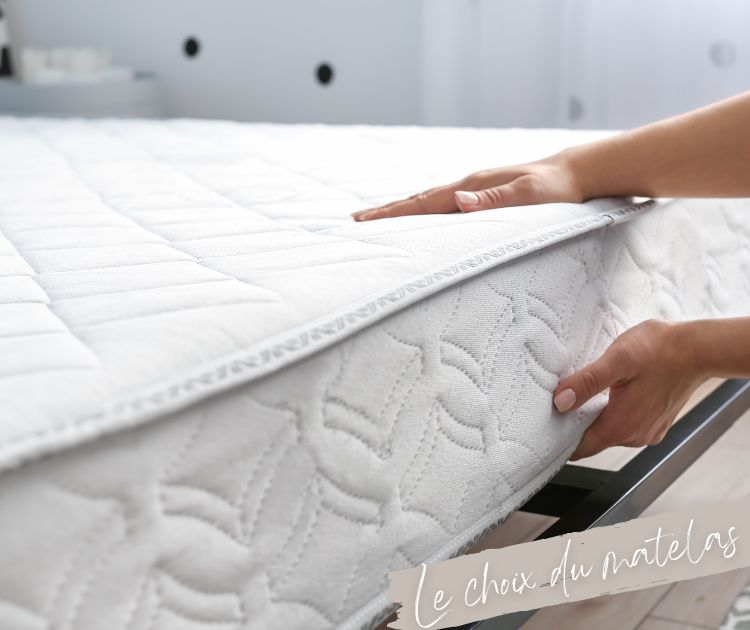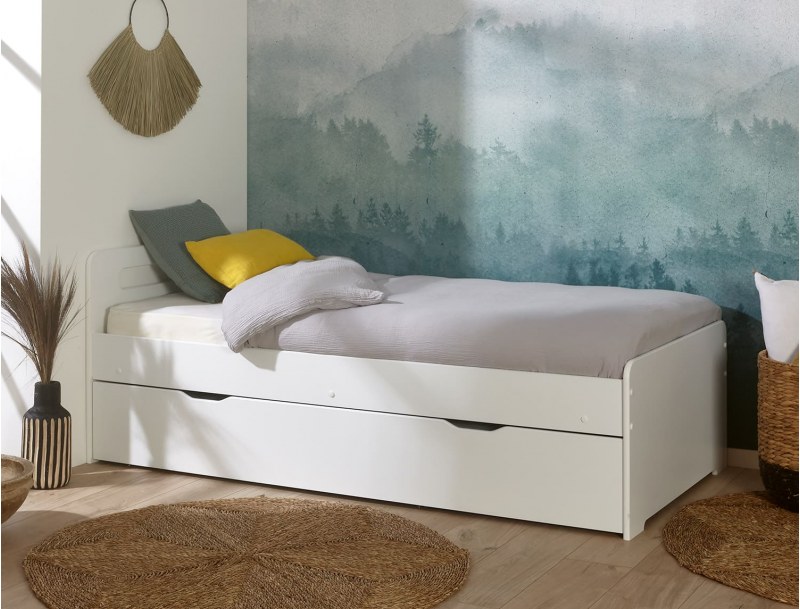How to secure a child's room against allergens?

Allergies affect many children in different ways. Whether cutaneous, respiratory, or food-related, they can take various forms. Therefore, parents must exercise caution to protect children from the most allergenic substances, as well as secure their environment, particularly their bedroom. So what are the allergy factors in children? How can we protect the youngest?
Children's sensitivity to allergens
Generally, an allergy is an excessive reaction of the body to a substance. It can manifest in several ways with asthma, food allergies, eczema, rhinoconjunctivitis, or hives. It's often during childhood that one can become aware of their sensitivity to certain substances. Therefore, several solutions can be implemented to limit the body's reactions and thus moderate the allergic response.
What are the main allergy factors in children?

Allergy factors in children can be very varied and numerous. Among the most common ones are:
- Certain foods
- Pollen
- Mold
- Certain animal hair
- Dust mites
- Feathers
Therefore, it's up to parents to protect their child from these substances if they notice allergic reactions. Regarding food, avoiding the allergenic food is recommended. For respiratory allergies, special attention must be paid to the child's environment. Certain choices and good habits must then be implemented to preserve your child's well-being.
How to limit the presence of allergens in a child's bedroom?
In your child's bedroom, you can absolutely limit the presence of allergens by choosing appropriate furniture and adopting good habits.
Choosing the furniture
Regarding furniture, certain pieces can help limit the presence of certain substances and thus preserve your child's well-being. Concerning the children's bed for example, it's preferable to choose furniture made of solid wood or ecological panels with low formaldehyde content. Children's beds with these materials aim to limit the presence of volatile organic compounds, which can be allergens and affect the child's well-being. Moreover, when choosing your 90x190 children's bed, also ensure the use of water-based paint or varnish to avoid the presence of solvents. This is notably the case with our Féroé White trundle bed 90x190.
Whether it's a children's trundle bed, a children's loft bed or a children's bunk bed, it's preferable to ensure these criteria are met, particularly the standards to check on a baby bed. This is true for the children's bed, but also for any other furniture that will be installed in the room.

Choosing the mattress
The choice of mattress to install on your child's bed should also be made carefully. Indeed, there are now mattresses that have received anti-dust mite treatment. Thanks to this type of mattress, the presence of dust mites (which are allergens) is limited to the maximum. You can also opt for a children's mattress made from naturally hypoallergenic material.
In any case, the presence of labels allows you to ensure the absence of certain substances, such as the Oeko-Tex Standard 100 label or the Certipur label.
Good practices to adopt
Beyond choosing a girl's bed or a boy's bed and a suitable mattress to limit allergy risk, it's also about adopting good daily habits:
- Clean regularly and especially with a vacuum cleaner to effectively remove dust.
- Air out the room if possible daily and in the early morning (to avoid pollen entering the room in spring, for example).
- Avoid having animals in a child's bedroom.
- Wash bedding regularly.
- Use a mattress protector if possible.
What to do in case of an allergic reaction?
When a child has an allergic reaction, it can be more or less intense. Food allergies can be particularly dramatic and require emergency care. Regarding allergies to pollen, dust mites, or animal hair, they can be identified when skin rashes, sneezing, coughing, itching, watery eyes, stuffy nose, etc. appear.
If you notice these types of symptoms in your child, don't delay in making an appointment with their pediatrician to first establish a diagnosis. Then, several options can be considered depending on the case, such as consulting an allergist who will be able to properly address this issue. There are multiple ways to manage allergy problems. Moreover, it's an issue that can evolve with time and age. Setting up appropriate monitoring can make all the difference.
Why are allergies stronger at night?
Regarding allergies to pollen or dust mites, it is common to notice an increase in symptoms in the evening, at bedtime. Indeed, falling asleep causes the respiratory system to relax and allergic symptoms become even more intense. It is therefore essential to keep allergens out of the room as much as possible to ensure restful nights for your child. Make sure to properly apply the previously mentioned advice.













 Choosing the right baby blanket dimensions according to season and age
Choosing the right baby blanket dimensions according to season and age
 How to attach a headboard (with or without drilling): quick and effective soluti
How to attach a headboard (with or without drilling): quick and effective soluti
 Waterproof sheet or mattress protector: the best solution by age group
Waterproof sheet or mattress protector: the best solution by age group
 27 Original, Useful, and Trendy Christmas Ideas for Teens 2025
27 Original, Useful, and Trendy Christmas Ideas for Teens 2025
 Christmas Activities for Baby: Creative Ideas for Home & Daycare
Christmas Activities for Baby: Creative Ideas for Home & Daycare

